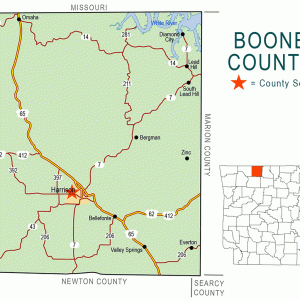calsfoundation@cals.org
Diamond City (Boone County)
| Latitude and Longitude: | 36º27’52″N 092º55’13″W |
| Elevation: | 797 feet |
| Area: | 2.82 square miles (2020 Census) |
| Population: | 757 (2020 Census) |
| Incorporation Date: | June 7, 1960 |
Historical Population as per the U.S. Census:
|
1810 |
1820 |
1830 |
1840 |
1850 |
1860 |
1870 |
1880 |
1890 |
1900 |
|
– |
– |
– |
– |
– |
– |
– |
– |
– |
– |
|
1910 |
1920 |
1930 |
1940 |
1950 |
1960 |
1970 |
1980 |
1990 |
2000 |
|
– |
– |
– |
– |
– |
– |
282 |
650 |
601 |
730 |
|
2010 |
2020 |
|
|
|
|
|
|
|
|
|
782 |
757 |
|
|
|
|
|
|
|
|
At a site that once was the northernmost steamboat stop on the White River, Diamond City is now a center for tourism on the shores of Bull Shoals Lake, with many lakeside weekend homes belonging to families from Harrison (Boone County) and other parts of Arkansas. Diamond City is also home to many retirees from other states. Aside from Harrison, which is the county seat, Diamond City is the largest city in Boone County.
The Osage hunted in the White River valley when the United States first acquired this land in the Louisiana Purchase in 1803. Even after the Osage signed treaties with the U.S. government, which moved them farther west, the area that would become Boone County remained sparsely settled. A small settlement was beginning to develop on West Sugarloaf Creek where it flowed into the White River when a steamboat first arrived in June 1851. The people reportedly chose to name the settlement Dubuque after hearing that Dubuque, Iowa, was the hometown of the steamboat pilot who stopped there. A road to Carrollton (Carroll County) was completed by 1832, and a post office was established at Dubuque on May 12, 1854. By that time, the settlement had grown to include two stores, a saloon, a blacksmith, two doctors, a grist mill, and horse races. During the Civil War, though, Dubuque withered away. In 1870, the entire township (including the growing town of Lead Hill) had a population of 827, including two African Americans.
The history of the land changed after World War II when the U.S. Army Corps of Engineers began building a series of dams to control flooding on the White River and to generate hydroelectric power. Lead Hill was located in the lowland that would become Bull Shoals Lake, and citizens were required to move. Most relocated to the new town of Lead Hill on nearby higher ground, but the towns of South Lead Hill and Sugarloaf were both created at this time. Sugarloaf was situated on the site of the former settlement of Dubuque. Bull Shoals Dam was begun in 1947 and completed in 1952, and Bull Shoals Lake quickly became an attraction for tourists.
Developer Henry W. Dietz converted the town of Sugarloaf into a second-class city in the 1960s. He succeeded in incorporating Diamond City on June 7, 1960, although Diamond City and Sugarloaf were not officially consolidated until May 5, 1966. Surrounded by Bull Shoals Lake on three sides (with Lead Hill to the south), Diamond City is best known for its many fishing spots. Several lakeside resorts draw tourists to the city, and the population is said to swell significantly during fishing season. The Diamond Hills Country Club and its golf course south of the city are also major attractions. The city has a Lutheran church, a Methodist church, and a Bible church. Diamond City has never had a school system. Children who live in Diamond City attend Lead Hill schools.
The first years of the twenty-first century brought disappointments to the city. A much-publicized cold-water fish hatchery planned by the Arkansas Game and Fish Commission for Diamond City apparently never materialized. In 2008, after being relocated several times over the years, the Diamond City post office was closed and mail was redirected to Lead Hill. City leaders have recently discussed a second wave of development for the city. The population of Diamond City grew from 730 to 782 between 2000 and 2010.
Diamond City has become well known for its level of political discord. For example, in 1994, the police chief handcuffed an alderman to a door to prevent him from leaving a city council meeting. In 2018, Mayor Jan Hudson resigned after being charged with stealing $4,550 from the local community center. In 2019, Mayor Linda Miracle sued city council members for meeting without her. In 2024, the mayor, Jaime Nuessner, resigned, and six other city officials followed, although most soon returned to work.
For additional information:
Boone County Historical & Railroad Society, Inc. History of Boone County, Arkansas. Paducah, KY: Turner Publishing Company, 1998.
Bowden, Bill. “6 Quit with Mayor, Return 2 Days Later.”Arkansas Democrat-Gazette, March 10, 2024, ppp. 1A, 10A. Online at https://www.arkansasonline.com/news/2024/mar/10/diamond-city-mayor-others-quit-but-most-are-now/ (accessed March 11, 2024).
———. “In Diamond City, Political Flaws Shine.” Arkansas Democrat-Gazette, July 29, 2019, pp. 1A, 3A. Online at https://www.arkansasonline.com/news/2019/jul/29/diamond-city-political-flaws-shine/ (accessed March 11, 2024).
Minton, Mark. “Diamond City Poised to Lose its Post Office.” Arkansas Democrat-Gazette. March 2, 2008, pp. 1B, 7B.
Steven Teske
CALS Encyclopedia of Arkansas
 Boone County Map
Boone County Map 




Comments
No comments on this entry yet.